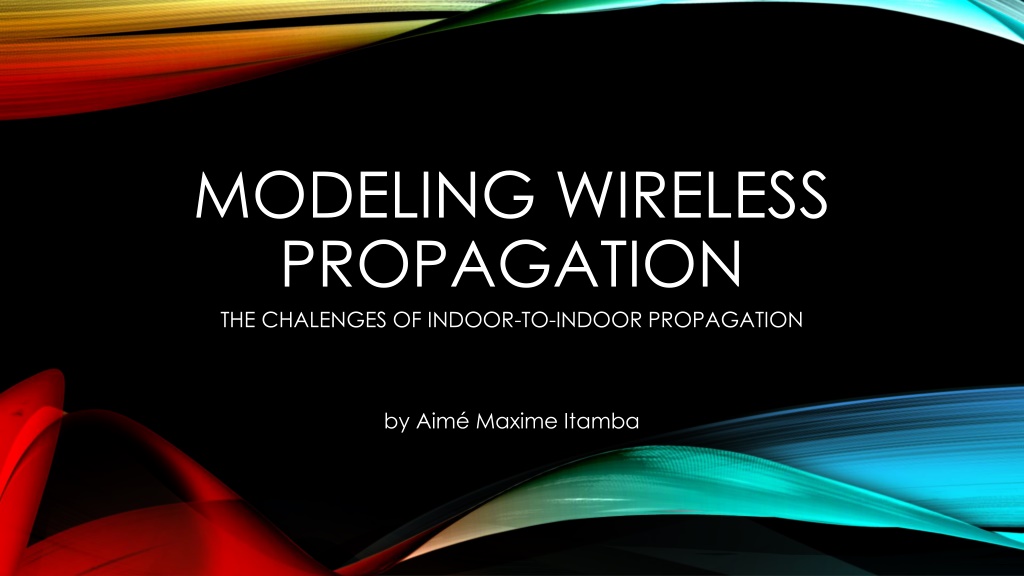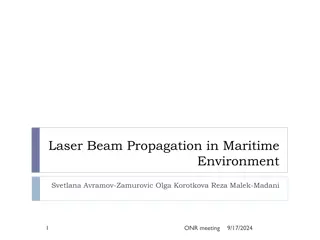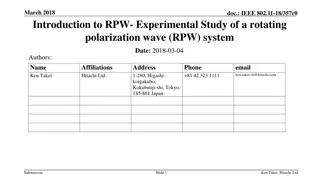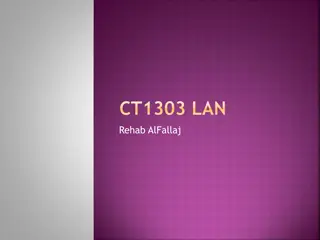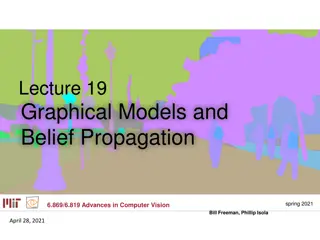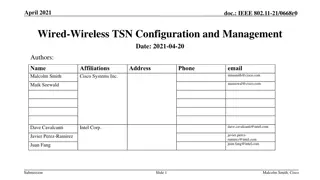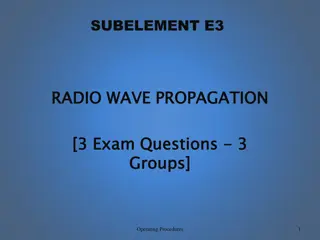Understanding Wireless Propagation Models: Challenges and Applications
Wireless propagation models play a crucial role in characterizing the wireless channel and understanding how signals are affected by environmental conditions. This article explores the different propagation mechanisms like reflection, diffraction, and scattering, along with the challenges and applications of indoor-to-indoor propagation. Various propagation landscapes and the utility of propagation models are also discussed. Different types of propagation models are highlighted, with a focus on indoor propagation models and their characteristics.
- Wireless propagation
- Channel characterization
- Indoor propagation
- Radio communication
- Propagation models
Download Presentation

Please find below an Image/Link to download the presentation.
The content on the website is provided AS IS for your information and personal use only. It may not be sold, licensed, or shared on other websites without obtaining consent from the author. Download presentation by click this link. If you encounter any issues during the download, it is possible that the publisher has removed the file from their server.
E N D
Presentation Transcript
MODELING WIRELESS PROPAGATION THE CHALENGES OF INDOOR-TO-INDOOR PROPAGATION by Aim Maxime Itamba
WHAT IS A PROPAGATION MODEL? Characterisation of the wireless channel, describes how the characteristics of the sent signal can be affected or how conditions of environment are, i.e., frequencies, obstacles Different models Various characteristics of propagation mechanisms Different environmental characteristics (Outdoor/indoor/land/sea/space...) Different applications area (point-to-point/point-to- area...) Different frequency ranges Some models include random variability
BASIC RADIO PROPAGATION The radio channel places fundamental limitations on the performance of wireless communication systems Three basic mechanisms of radio propagation 1. Reflection 2. Diffraction 3. Scattering All these three phenomenon cause Radio signal distortion Give rise to fades Plus additional propagation losses Radio channels are extremely random and do not offer easy analysis
VARIOUS PROPAGATION LANDSCAPE
OUTDOOR PROPAGATION LANDSCAPE IN URBAN AREA
INDOOR PROPAGATION LANDSCAPE
UTILITY OF PROPAGATION MODEL Modelling radio channel is important for: Determining the coverage area of a transmitter Finding modulation and coding schemes to improve the channel quality
PRIMARY DIVISION OF PROPAGATION MODELS Different models have been developed to meet the needs of simulating propagation behavior in different conditions Type odf models for radio propagation include: Models for Output Applications Models for Indoor Applications
CHARACTERISTICS OF INDOOR PROPAGATION MODELS The covered distances are much smaller The variability of the environment is much greater More clutter, scattering and less LOS
INDOOR MODELING TECHNIQUES ITU Indoor Path Loss Model Log-Distance Path Loss Model
ITU INDOOR PATH LOSS MODEL To predict propagation path loss inside buildings The average path loss in dB is Where N is the distance power loss coefficient (f) is the frequency in MHz (d) is the distance in meters (d > 1m) Lf(n) is the floor penetration loss factor (n)Iis the number of floors between the transmitter and the receiver
LOG-DISTANCE PATH LOSS MODEL This particular model is based on the assumption that path loss varies exponentially with distance The model is described by the following formula: Where PL(d0)is the path loss at the reference distance, usually taken as (theoretical) free- space loss at 1 m Xs is a Gaussian random variable with zero mean and standard deviation 10N is the path loss distance exponent
